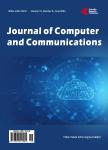Fetal MRI Artifacts: Semi-Supervised Generative Adversarial Neural Network for Motion Artifacts Reducing in Fetal Magnetic Resonance Images
Fetal MRI Artifacts: Semi-Supervised Generative Adversarial Neural Network for Motion Artifacts Reducing in Fetal Magnetic Resonance Images作者机构:National Laboratory for Scientific Computing Rio de Janeiro Brazil Biodesign Laboratory Dasa/PUC-Rio Rio de Janeiro Brazil
出 版 物:《Journal of Computer and Communications》 (电脑和通信(英文))
年 卷 期:2024年第12卷第6期
页 面:210-225页
学科分类:080903[工学-微电子学与固体电子学] 0809[工学-电子科学与技术(可授工学、理学学位)] 08[工学] 080501[工学-材料物理与化学] 0805[工学-材料科学与工程(可授工学、理学学位)] 080502[工学-材料学]
主 题:Fetal MRI Artifacts Removal Deep Learning Image Processing Generative Adversarial Networks
摘 要:This study addresses challenges in fetal magnetic resonance imaging (MRI) related to motion artifacts, maternal respiration, and hardware limitations. To enhance MRI quality, we employ deep learning techniques, specifically utilizing Cycle GAN. Synthetic pairs of images, simulating artifacts in fetal MRI, are generated to train the model. Our primary contribution is the use of Cycle GAN for fetal MRI restoration, augmented by artificially corrupted data. We compare three approaches (supervised Cycle GAN, Pix2Pix, and Mobile Unet) for artifact removal. Experimental results demonstrate that the proposed supervised Cycle GAN effectively removes artifacts while preserving image details, as validated through Structural Similarity Index Measure (SSIM) and normalized Mean Absolute Error (MAE). The method proves comparable to alternatives but avoids the generation of spurious regions, which is crucial for medical accuracy.



